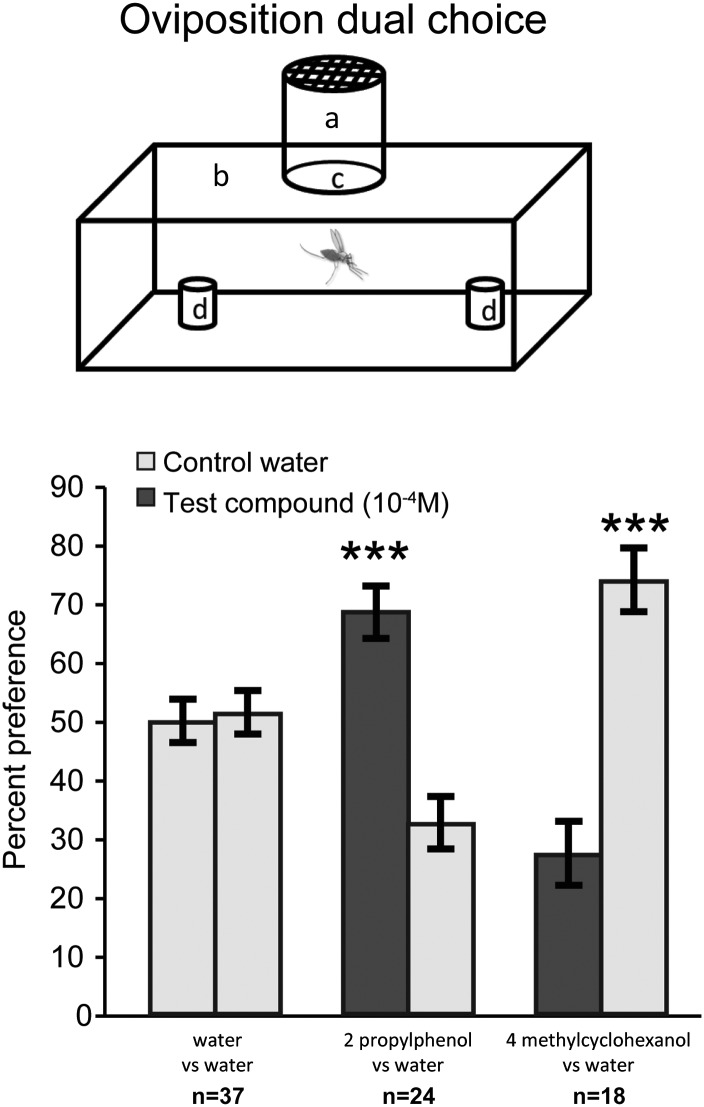Fig. 4.
Dual choice oviposition assay. (Upper) Schematic diagram of oviposition preference bioassay cage for dual choice test. Gravid females are held in releasing chamber (a) and allowed to enter assay cage (b) after the dark cycle begins by opening a pathway (c) connecting the releasing chamber to the assay cage. Females are allowed to choose between two oviposition cups (d) containing either test water or control water. Ten females are released per cage and represent a single assay. (Lower) Gravid female responses to a choice of either water vs. water (Left), water vs. 2-propyl phenol (Center) or water vs. 4 methylcyclohexanol (Right). y axis reports percent of total eggs oviposited in either untreated water (light gray bar) or treated water (dark gray bar). All compounds were tested at a concentration of 10−4 M. The number of dual choice assays is indicated along the x axis. Error bars show SEM. ***P < 0.001, t test.

